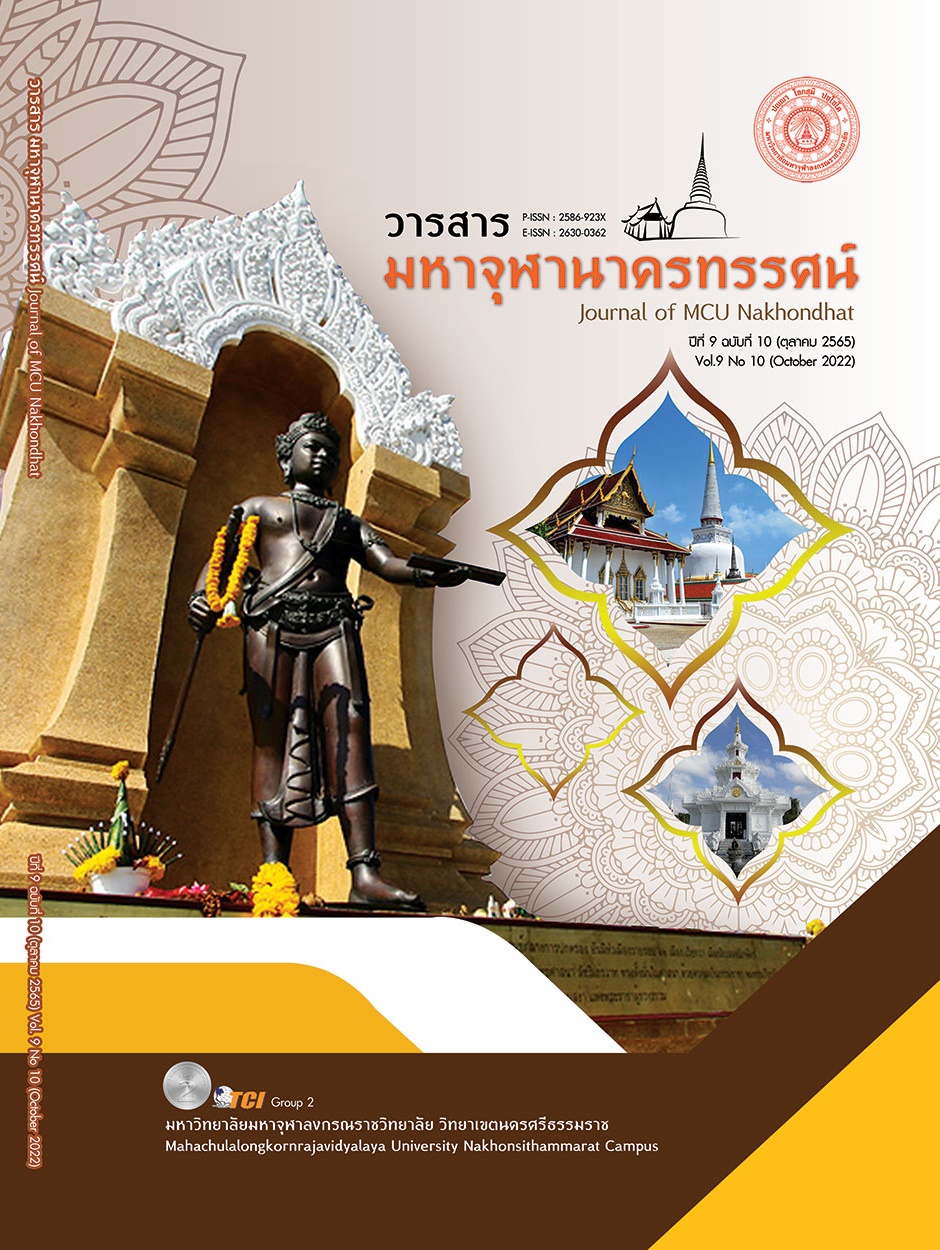IDENTITY AND SOCIAL SPACE: LIFE STYLE REFLECTING OF ESAN TAI PAUN’S
Main Article Content
Abstract
This article has been academic argument issue that who was Tai Puan? What is the cultural identity? When did they live in Thailand? Why did they surrender to Thai state although their ancestor was in Chiang Kwang; Lao People’s Democratic Republic? The 48 samples were obtained by purposive sampling which were respondents: Tai Puan in Ban Bu Hom and Ban Klang in Chiang kan district, Loei province; Thai Puan in Ban Mor, Ban Mor subdistrict, Sri chiang mai district, Thai Puan in Ban Sa-air, Pho-tak district in Nong khai province; Thai Puan in Ban Klang Yai, Ban Thon in Ban Pue district; and Thai Puan in Ban Chiang in Nong han district, Udonthani province. All of them are an ethnic group that migrated to Thailand in the reign of King Taksin of Thonburi. The essential issue of their difference from other people were uniqueness and specific cultural identity in terms of beliefs, traditions, rituals and cultural products. They had common identities: harmonious, loving friends. And the social space were the power relations and bargaining for the Tai Puan people to perceive to be one together, having cultural products from social interactions, which effected to the reflection image of Tai Puan and became their cultural heritage such i.e. Tai Puan language, hand-woven cloth, Kha-ma and E-po cloth, Phasin, auspicious 9 colors, Puan Ka Lure which indicated the distinguished identity of the Tai Puan people to response to tourism involving with ethnic group ceremonial. These traditions and practices have been inherited until now. This is the main issue that the researcher would like to present in this research findings.
Article Details

This work is licensed under a Creative Commons Attribution-NonCommercial-NoDerivatives 4.0 International License.
References
จารุวรรณ ธรรมวัตร. (2540). ตำนานและพงศาวดารพวน : อุดมการณ์สมานฉันท์ระหว่าง เผ่าพันธุ์. มหาสารคาม: มหาวิทยาลัยมหาสารคาม.
บุญถม เจริญชนม์. (5 ตุลาคม 2564). พัฒนาการสังคมและวัฒนธรรมไทพวนในภาคอีสาน. (นางเกศรี วิวัฒนปฐพี, ผู้สัมภาษณ์)
โพไซ สุนนะลาด. (2538). ดนตรี : วิถีชีวิตชาวไทยพวน แขวงเชียงขวาง ประเทศลาว. ใน วิทยานิพนธ์ศิลปศาสตร์มหาบัณฑิต สาขาวิชาศิลปศาสตร์. มหาวิทยาลัยมหาสารคาม.
ไพบูลย์ วิริยะพัฒนไพบูลย์. (2553). ประวัติศาสตร์พวนมาจากไหน. นนทบุรี: เลิศชัยการพิมพ์.
ฤดีมน ปรีดีสนิท. (2538). วัฒนธรรมประเพณีและประวัติศาสตร์ชุมชน กรณีไทย-พวน อำเภอ บ้านผือ. ใน รายงานการวิจัย . ราชภัฎอุดรธานี.
ลัดดาวัลย์ ใจหาญ. (4 ตุลาคม 2564). ภาพสะท้อนวิถีชีวิตไทพวนในภาคอีสาน. (พิพรรณ แก้วโภคา, ผู้สัมภาษณ์)
วิเชียร วงศ์วิเศษ. (2517). ไทยพวน. กรุงเทพมหานคร: โรงพิมพ์องค์การทหารผ่านศึก.
สมพร สุทธิบุญ. (8 ตุลาคม 2564). การสร้างอัตลักษณ์ของชาวไทพวนในภาคอีสาน. (รพิพรรณ แก้วโภคา, ผู้สัมภาษณ์)
สมศักดิ์ ศรีสันติสุข. (2557). การประเมินและสังเคราะห์สถานภาพองค์ความรู้การวิจัย วัฒนธรรมภาคตะวันออกเฉียงเหนือ : ความหลากหลายทางชาติพันธ์. ารสารภาษา และวัฒนธรรม, 1(2), 35-49.
สุจิตรา เข็มมุกด์. (2560). สัญลักษณ์ไทยพวน : การศึกษาอัตลักษณ์กลุ่มวัฒนธรรมไทยพวนใน เขตพื้นที่ภาคกลางของประเทศไทยเพื่อแนวทางในการออกแบบ. กรุงเทพมหานคร: โรงพิมพ์ดิจิตอล.


